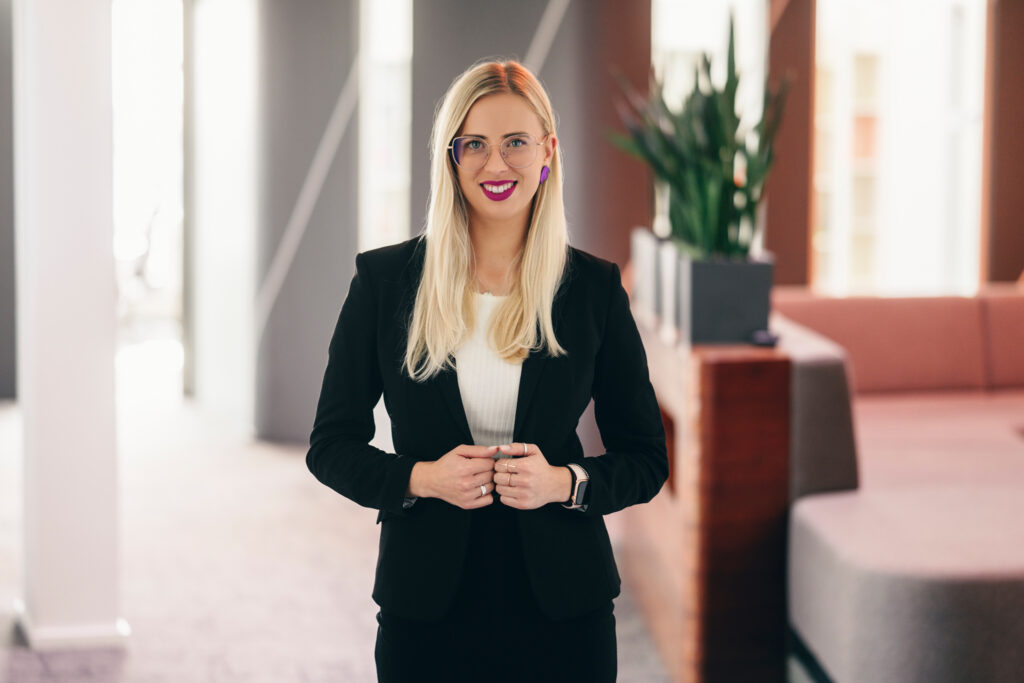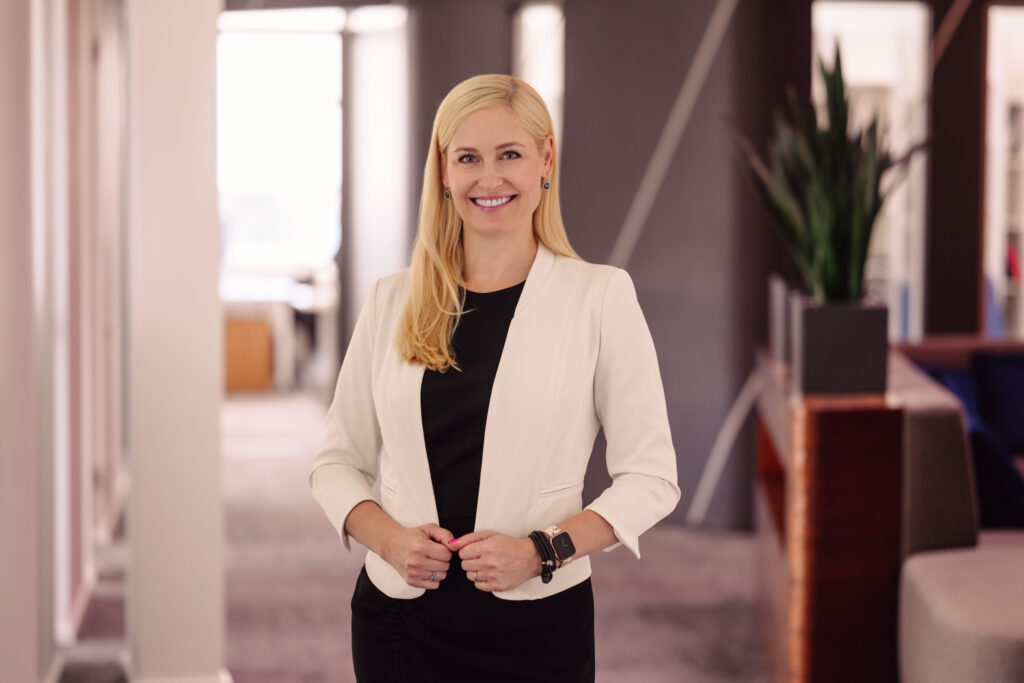Artificial Intelligence Is Launching the Golden Age of PR
The rapid development of artificial intelligence has raised doubts about the sustainability of many professions – including the role of PR professionals. While it’s inevitable that increasingly sophisticated AI will eventually replace a large share of junior-level positions – jobs that today mostly revolve around research and writing – it would be premature to declare the entire field doomed. The opposite is true: the more widespread AI becomes, the greater the responsibility and workload that falls on communications professionals.
There are many reasons for this, but two closely connected factors stand out. In an era of mass content creation and information noise, strategic messaging and strong media relations skills are more important than ever. At the same time, in a world where ChatGPT is emerging as a serious competitor to Google, the value of earned media is higher than it has ever been.
In the age of AI, earned media is no longer just a tool for sales, reputation-building, and gaining public trust. Large language models like ChatGPT, Perplexity, and Claude draw their knowledge primarily from public sources – news articles, social media, and trusted outlets such as Wikipedia, industry directories, and similar repositories. The more frequently and credibly a company is mentioned, the more likely it is to surface in AI-generated recommendations and responses.
Large language models like ChatGPT, Perplexity, and Claude draw their knowledge primarily from public sources – news articles, social media, and trusted outlets such as Wikipedia, industry directories, and similar repositories.
This matters even more given how quickly people are adopting AI tools for search.
According to an AP-NORC survey, 60% of American adults already use AI for information searches, with that number climbing to 74% among those under 30. Adobe Express research shows that 77% of U.S. ChatGPT users primarily treat the platform as a search engine, and a quarter of them prefer it over Google. This means that an ever-growing share of initial information gathering happens within AI ecosystems – if your brand isn’t visible there, it risks being invisible to much of your target audience.
Content Alone Isn’t Enough
And this brings us to the second point. While ChatGPT and other tools can, with some human support, produce publishable content – press releases, opinion pieces, posts – that alone isn’t sufficient. Communication isn’t just words in a Word document. It’s also about where you’re visible, who you’re visible to, what messages you convey, why you convey them, and how you reach that visibility.
AI can only support part of this process. In a small market like Estonia, industry-specific expertise is irreplaceable. And when it comes to actually securing coverage, the role of a PR expert with a strong, trusted network is indispensable. An AI can draft the perfect opinion piece, but if it doesn’t know where, how, and to whom it should be pitched, the piece will go nowhere.
Consistency and long-term strategy also can’t be overlooked. Trust doesn’t appear overnight – not among the public, and not within AI tools. To make a lasting impression with your name, story, and ideas, you need sustained, thoughtful effort. That requires market awareness, trend forecasting, the ability to think several steps ahead, and a sharp sense of what truly matters.
The approach to communications must be strategic. Practitioners need to understand real business needs, identify opportunities, and prevent problems. Adapting to AI tools is one part of this, but never the whole story: long-term reputation building, supporting the right narratives, and aligning with broader business strategies remain critical.
Communication isn’t just words in a Word document. It’s also about where you’re visible, who you’re visible to, what messages you convey, why you convey them, and how you reach that visibility.
Quietly in the Shadows
All of this explains why the role of PR professionals will not shrink in the age of AI; it will expand. Communications is becoming an even more business-critical strategic function, with direct impact on a company’s visibility both to people and to algorithms. The arrival of AI inevitably changes what our work looks like, but those changes are positive: less routine “manual labour,” more big-picture thinking, contextual awareness, networking, and strategy.
If PR work were only about drafting articles, then yes – people in the sector would need to start looking for other careers. But the reality is that communications work goes far beyond content creation and filling social media calendars. It is a strategic function, and its importance will only grow in the coming years: since anyone can now produce decent content, what truly matters is standing out with the right messages, in the right channels, at the right time.
Fail to do that, and you risk fading into obscurity – both in the eyes of the public and in the increasingly influential AI tools shaping information discovery.
Five Ways to Ensure Your Company Shows Up in AI Tools
Be visible in trusted media
AI tools prioritise sources considered authoritative. Aim to appear regularly in quality media outlets through articles, interviews, and expert commentary. Even unlinked mentions help algorithms remember and surface your brand.
Get listed in industry directories and rankings
Identify respected comparison portals, business directories, or professional association databases in your sector, and create detailed profiles. Add case studies, showcase work, and collect client feedback.
- Optimise your webside and blog
A well-structured website and informative blog increase visibility in both traditional search engines and AI-powered results. Content should address audience questions, be relevant, and provide value.
- Create and maintain a Wikipedia page
Both international Wikipedia and the local Estonian Vikipeedia are trusted sources for AI. Follow platform guidelines, cite reliable media sources, and update content regularly.
- Stay active on social media
Consistent and relevant activity on social platforms keeps your company visible, expands search reach, and creates additional signals for AI systems to factor in.
Whom Do People Trust? Influencer Marketing Is More Than Just a Trend
Influencer marketing has become one of the most effective and fastest-growing sectors in today’s digital landscape. Brands that want to build a stronger connection with consumers are no longer relying solely on traditional advertising – they’re partnering with content creators who have loyal, trusted followings. Why build a new community from scratch when someone else has already worked hard?
Emily Hund, a researcher at the University of Pennsylvania and author studying influencer culture and digital media, notes that people often trust influencers more than journalists, and increasingly turn to them for news and information. A recent public opinion survey commissioned by the Estonian Government Office found that social media is the mostimportant information source for people living in Estonia who belong to other ethnic backgrounds. Estonian news portals came in second. Ethnic Estonians also use social media for news, but for them, it ranks fourth. This, however, is gradually shifting.
In the age of social media, people don’t want to see just advertisements – they’re looking for content they can relate to, or that offers enough context to help them make decisions. That’s the power of influencer marketing: it creates real, trusted connections between brands and audiences. For example, when Gen Z considers buying an expensive product, they’re more likely to research reviews from influencers on social media than to read a journalist’s article. On the other hand, people over 65 still primarily get their information from traditional journalism. Successful influencers often carve out a niche and communicate authentically, earning greater trust from their followers.
Three Reasons Why to Include Influencers in Your (PR) Campaign:
- Credibility and authenticity – People trust influencers because they perceive them as “real people” who share their everyday lives and personal experiences.
- A sense of community – Influencers foster tight-knit communities where followers interact and feel part of something bigger. In many cases, an influencer’s community is larger than the circulation of a national newspaper. For instance, a campaign we ran last summer reached nearly 40,000 people through influencer content. By comparison, one of Estonia’s top newspapers, Õhtuleht, had a circulation of 29,400 that same month.
- Natural brand integration – Unlike traditional ads, influencer marketing feels more organic. Content creators share products in the context of their real lives, making the message more believable. They can also be involved in PR initiatives and generate earned media. A smart influencer post can spark media coverage or even kick off the public conversation.
Influencer Marketing Is More Than a Passing Fad
While sceptics may still see influencer marketing as a fleeting trend, the data tells a different story. Brands that invest in long-term partnerships with the right influencers are building a powerful communication tool. But it’s crucial to choose wisely – an influencer must align with the brand’s values and audience. Simply going after high follower counts without evaluating content and tone can backfire, alienating both the influencer and their community.
Influencer marketing isn’t just about social media – it’s a strategic communications tool. When brands effectively incorporate it into their overall strategy, it becomes not just powerful but essential for modern marketing success.
Key Trends in Influencer Marketing
Influencer marketing continues to evolve rapidly, but several trends are standing out:
1. Micro and Nano-Influencers
While mega- and macro-influencers can reach large audiences, smaller influencers often see higher engagement. Their recommendations feel more personal and trustworthy. That’s why it’s important to carefully evaluate which influencer best suits your brand.
2. Long-Term Collaborations
One-off campaigns can feel like ads. In contrast, ongoing collaborations build trust between the brand and influencer. Consistent messaging strengthens the connection and makes the brand more believable to followers.
3. Authenticity and Transparency
Consumers are more media-savvy than ever and expect honesty from both brands and influencers. Clear labels like “Paid partnership” or visible brand tags help audiences identify sponsored content and maintain trust.
4. Integration of Social Media and E-Commerce
Social media platforms are becoming integrated shopping hubs where purchases happen directly. Instagram, TikTok, and YouTube now offer in-app shopping tools, making influencer marketing even more impactful.
Meta Advisory is Estonia’s Communication Agency of the Year 2025
Once is chance, twice is coincidence, three times is a pattern.
Meta Advisory has been named Communications Agency of the Year for the third time. Our Managing Partner, Andreas Kaju, shared his thoughts with the Estonian Marketing Association (TULI) on winning, agency life, and the bigger picture. Here are some highlights from the interview.
Meta wins Communications Agency of the Year for the third time. This time, you took home gold, two bronzes, and a special egg. How do you feel about the result?
I look at it from several angles. The number of Golden Egg awards we win doesn’t define whether a year was successful. We’re a business. The main measure of client trust is revenue. That’s our primary capital.
We did all right. We can’t do better than our clients do. But there’s no point in dwelling on last year – the past is the past. We live in tomorrow. The global climate of uncertainty is affecting our clients, too.
No clients have left in recent months, and none are planning to. But nobody’s taking big investment risks either. Deal flow has frozen. There are no major mergers or acquisitions happening, projects that typically bring us work. And there are no new international companies entering Estonia (although, full disclosure: between the interview and its publication, Meta landed a project with a European manufacturer planning production in Estonia).
Given that we managed to grow despite war and geopolitical turmoil, I’m satisfied. Any sane person would be. But it takes a lot more effort than it used to. Work used to come easier.
What’s the broader impact of the technological revolution on society? There’s talk that everyone needs to learn to “prompt”, but realistically, not everyone will. Many jobs may disappear. What then?
Jobs won’t disappear altogether, but half the people working in the field today will lose theirs. The work will go to people with tech skills. Those without will fall behind.
There will be less demand for people who want to be paid too much for doing basic tasks. Every wave of new technology has shown that overall productivity increases.
Sure, there’s social injustice in that. Younger people will have an advantage – it’s more intuitive for them. Older generations will have to learn more.
But I believe we need smarter, sharper people, and for our field, that’s a good thing – the bar gets higher.
Crucially, learning can’t be left entirely to individuals. My partners and I are responsible for ensuring learning happens. We have training plans. I personally run internal seminars. And as part of Europe’s largest strategic communications group, Rud Pedersen, we have a company-wide professional development program.
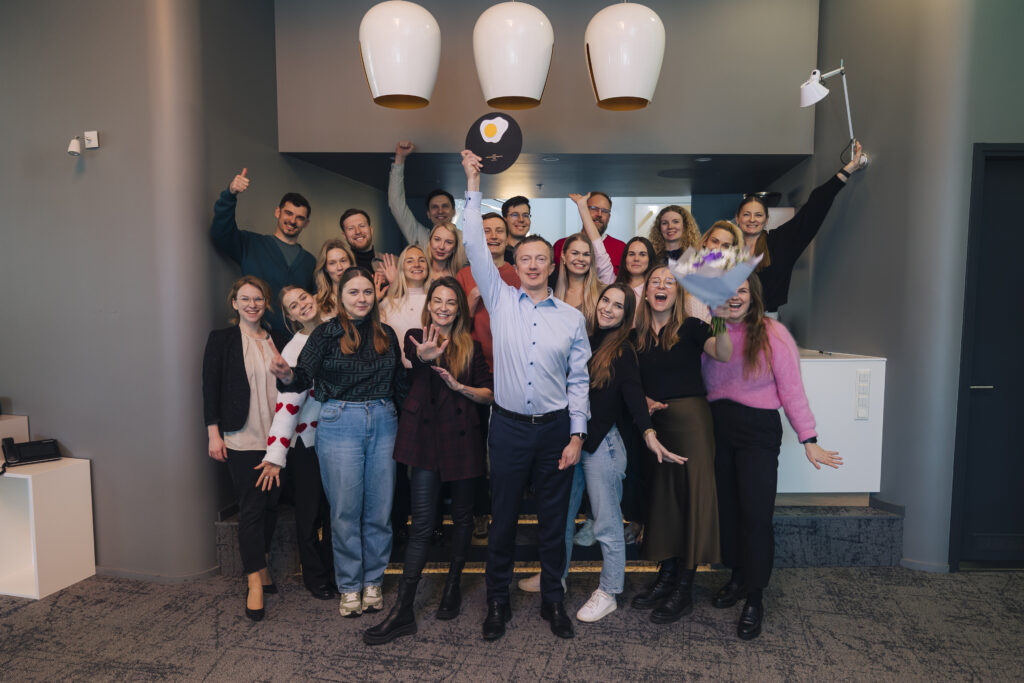
Does this industry require more focus on mental health than others? And are we doing enough?
I don’t know if it’s specific to our industry, but it probably applies to the entire advisory sector. Things move fast. We live in a time of upheaval, and client stress inevitably spills over to us. That puts people in companies like ours under serious pressure, and that gives us a special responsibility to look after mental wellbeing. Years ago, in cooperation with Peaasi, we conducted our first mental health survey and added private health insurance for everyone.
As leaders, we can’t kid ourselves. Throwing champagne parties, adding a ping-pong table to the office, or organising padel outings isn’t mental health care.
Caring for mental health means managing workloads, being aware of whether people are coping, and offering support from more experienced colleagues when needed. You can’t do that without staying closely in tune with people’s work lives. It takes active leadership.
A leader needs to know when someone’s struggling. And employees must hold leaders accountable for that. This doesn’t mean the culture needs to go soft. On the contrary, our internal culture is demanding and performance-focused. But it needs to feel safe at the same time.
Leadership is an art that now requires more thought than ever. You can’t just tell people in a meeting that we need more clients and expect that to work. That kind of company won’t survive.
There are four of us on the leadership team. We’ve all had to level up, and we’ll keep doing so. When I talk about learning, the biggest responsibility is on us.
From the employee’s point of view, they expect to grow and to see a future for themselves. At the end of the year, they should feel like they’ve gotten better. That’s what we work toward systematically.
To wrap up – back to the Golden Egg. In your acceptance speech, you said you didn’t care much about awards in the beginning. But that changed?
For the first seven years, we didn’t enter any work into the Golden Egg Awards competition. It didn’t seem important. Honestly, I was a bit dismissive. A founder and CEO needs to have strong self-belief and confidence in what they’re building. Yes, I looked at the sector with a bit of arrogance.
I still think we do things differently, but now I see ourselves more as part of the sector. How well we do also depends on how strong the overall standard is. If clients thought the whole industry was weak, that would affect our pricing power too.
Since clients often see this category as a low-value or interchangeable service, like it doesn’t matter what brand they choose, it’s our job to show that it does matter. And that’s not a battle we should fight alone.
That’s why I’ve come to value collaboration and contact with other agencies more. It’s a shared fight for quality. The Golden Egg Awards are part of that. Raising and maintaining the standard isn’t an abstract or moral issue – it’s a very practical one.
And of course, I saw how much recognition meant to my colleagues. When you don’t win, or win less than you hoped, you feel it. But that’s part of the deal. To truly feel joy, you have to experience the sting of loss. The Golden Egg helped us realise how important recognition is to people, and we take it more seriously inside the company now, too.
Read the full interview from the TULI website.
GALLERY
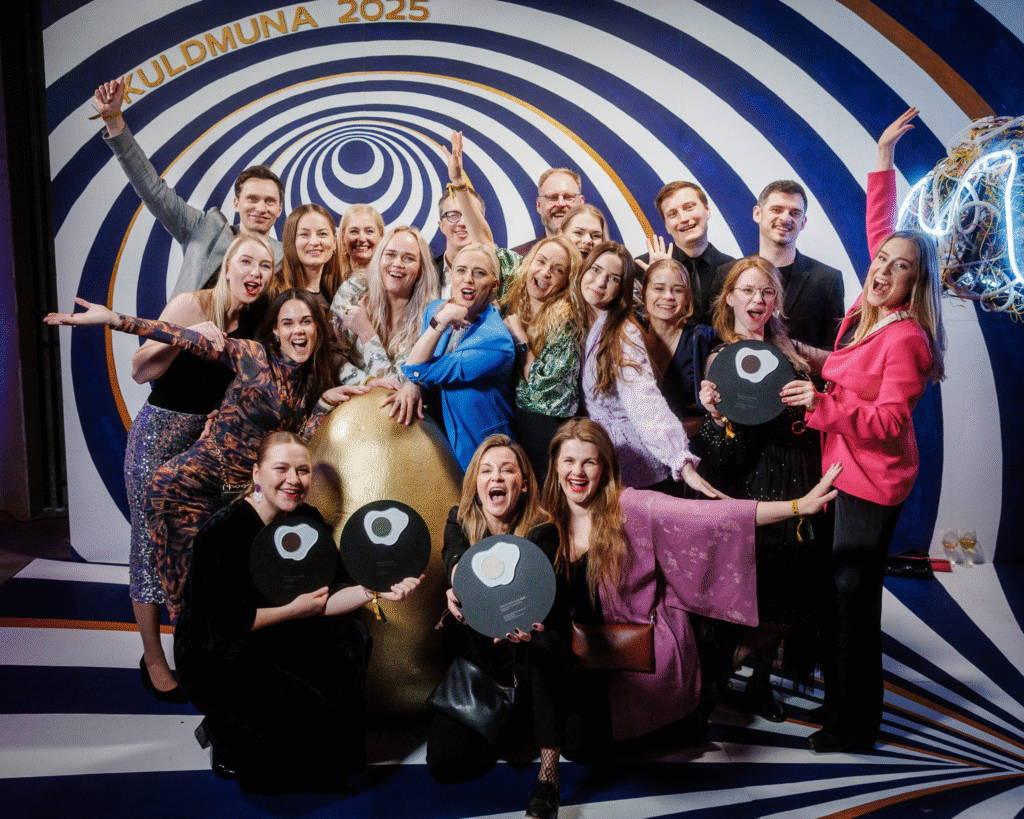
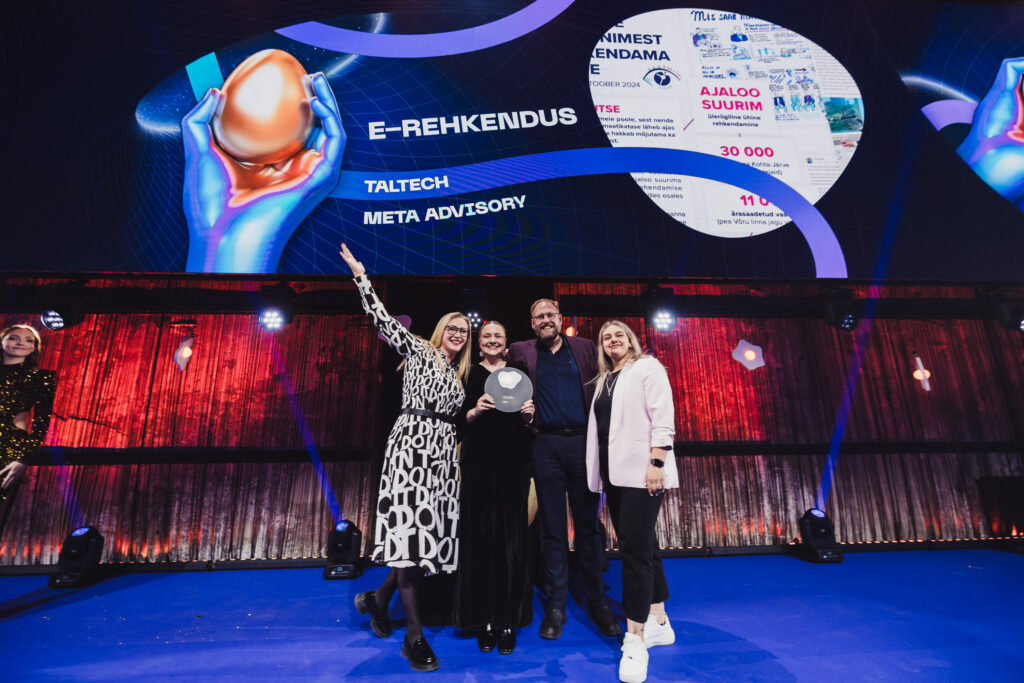
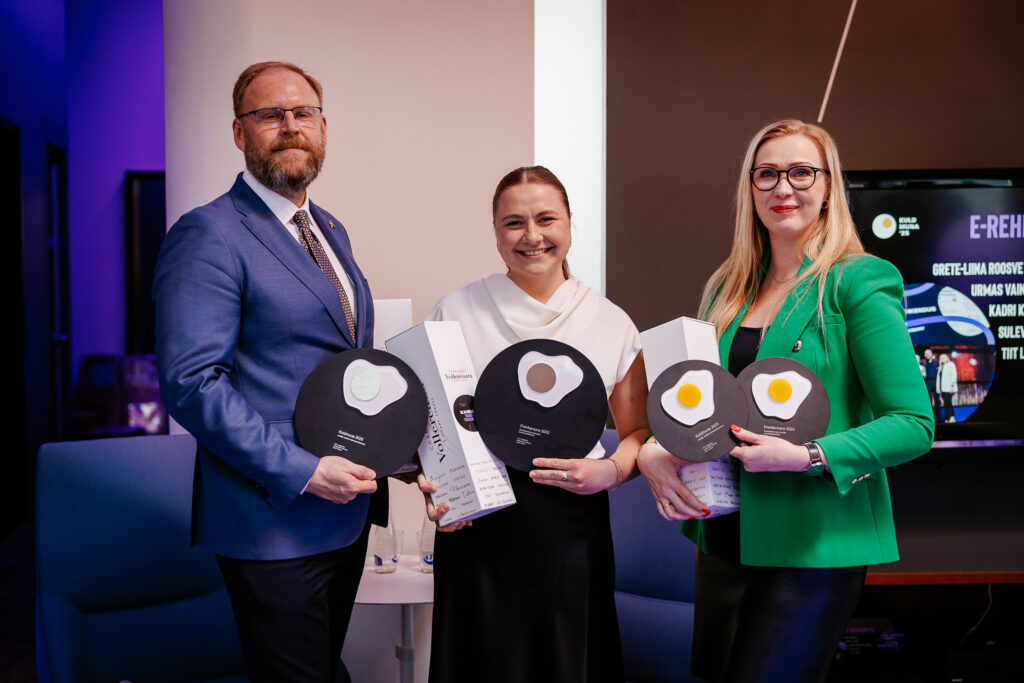
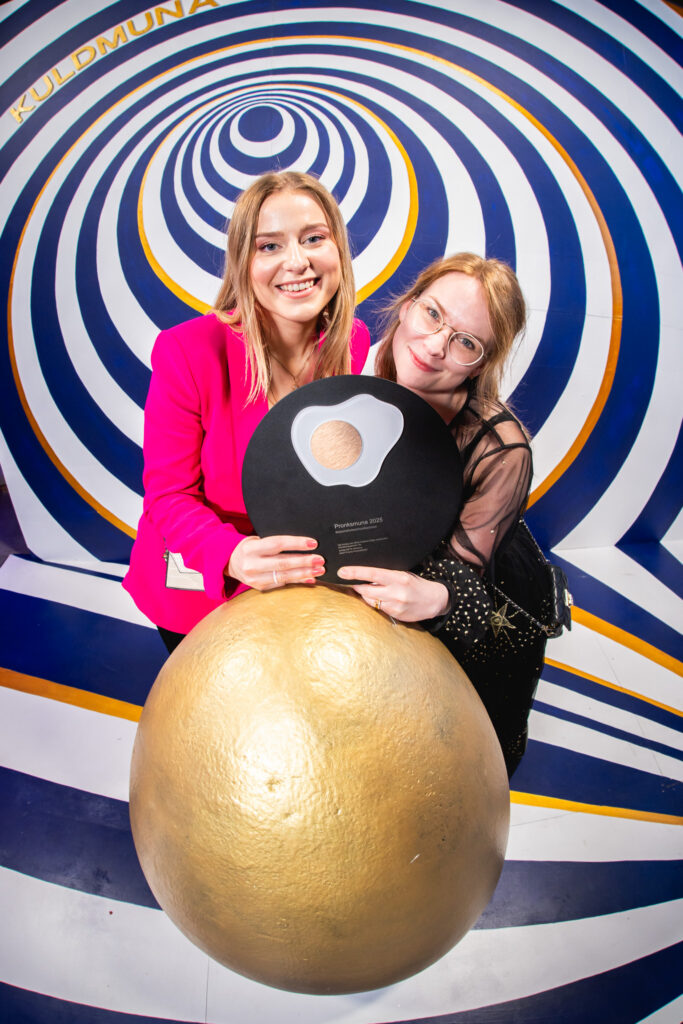
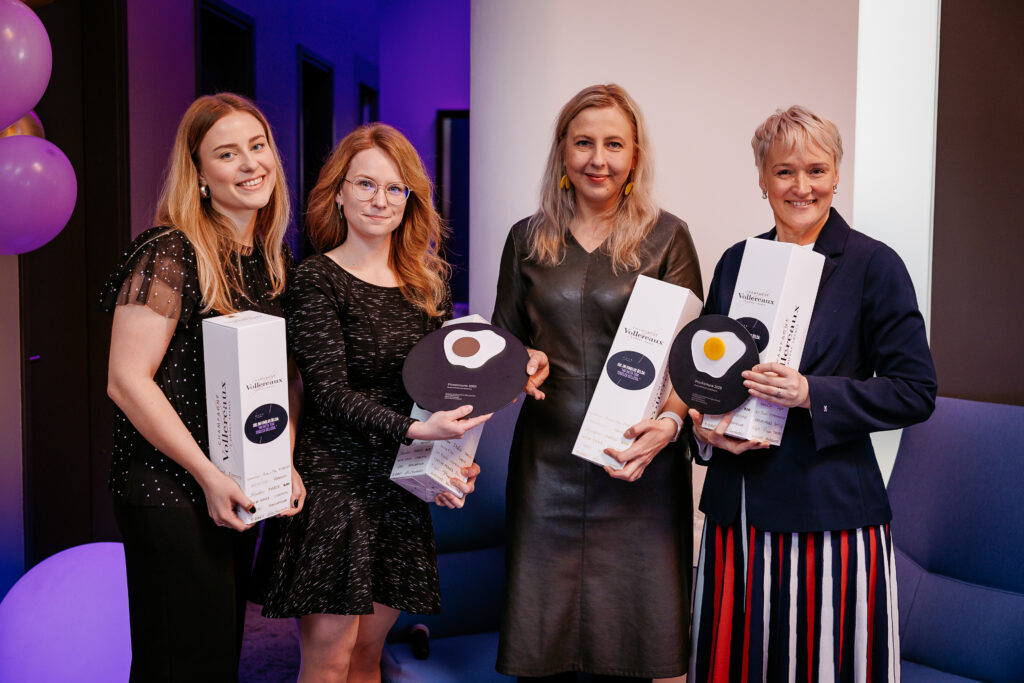
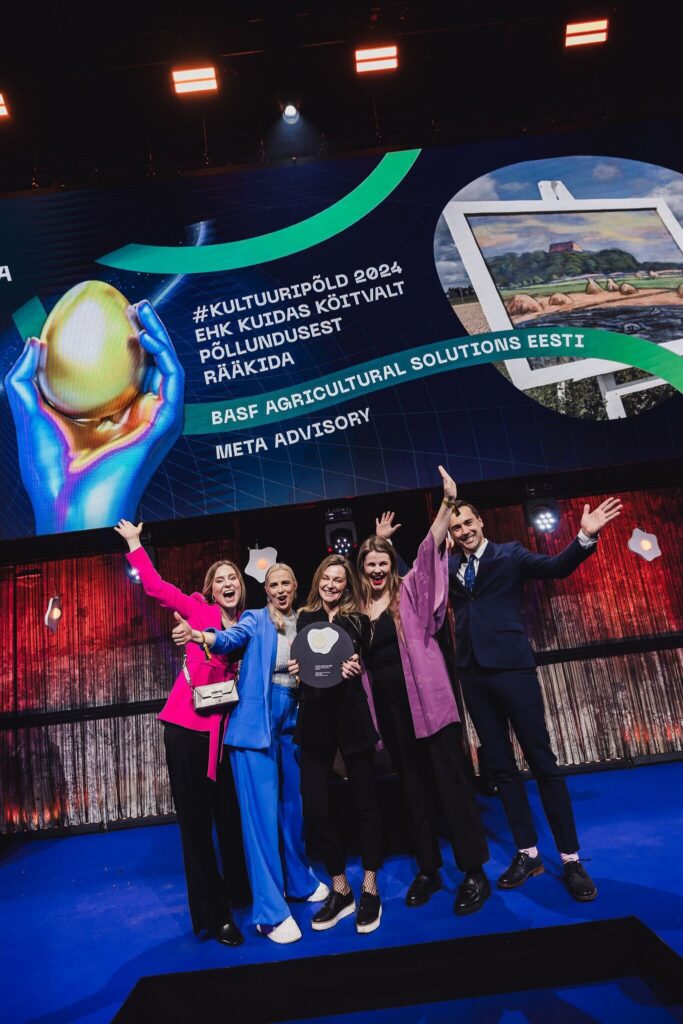


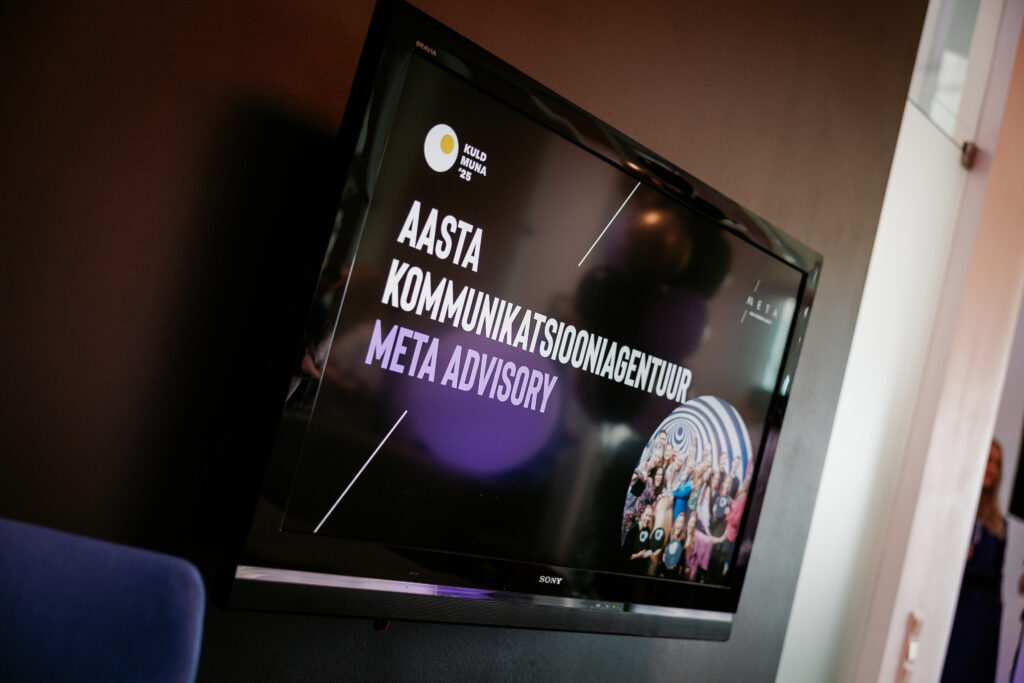

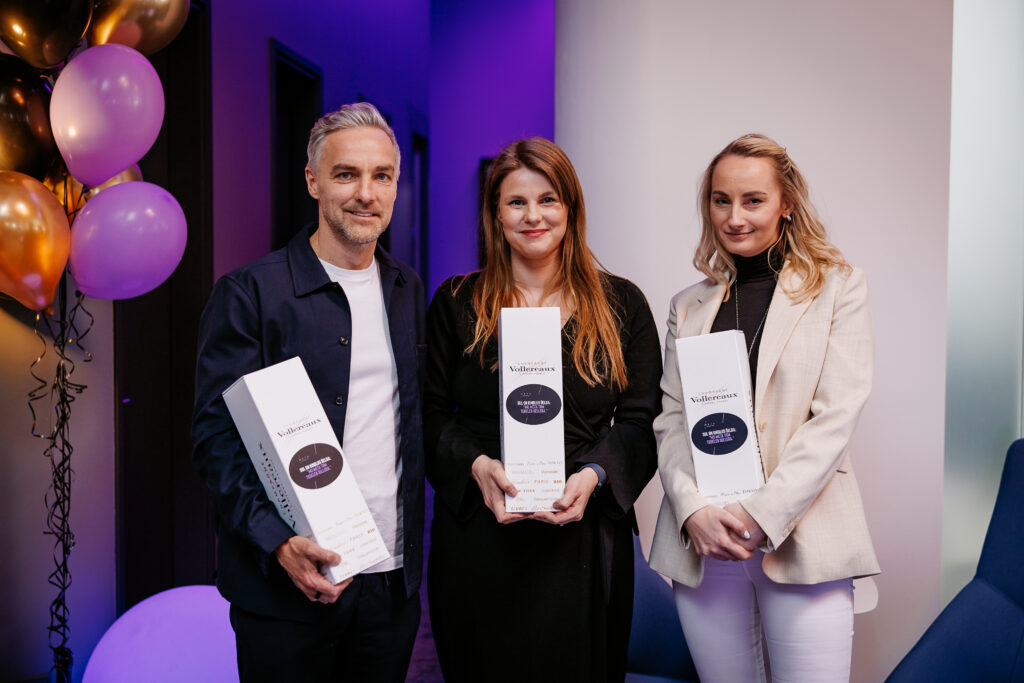
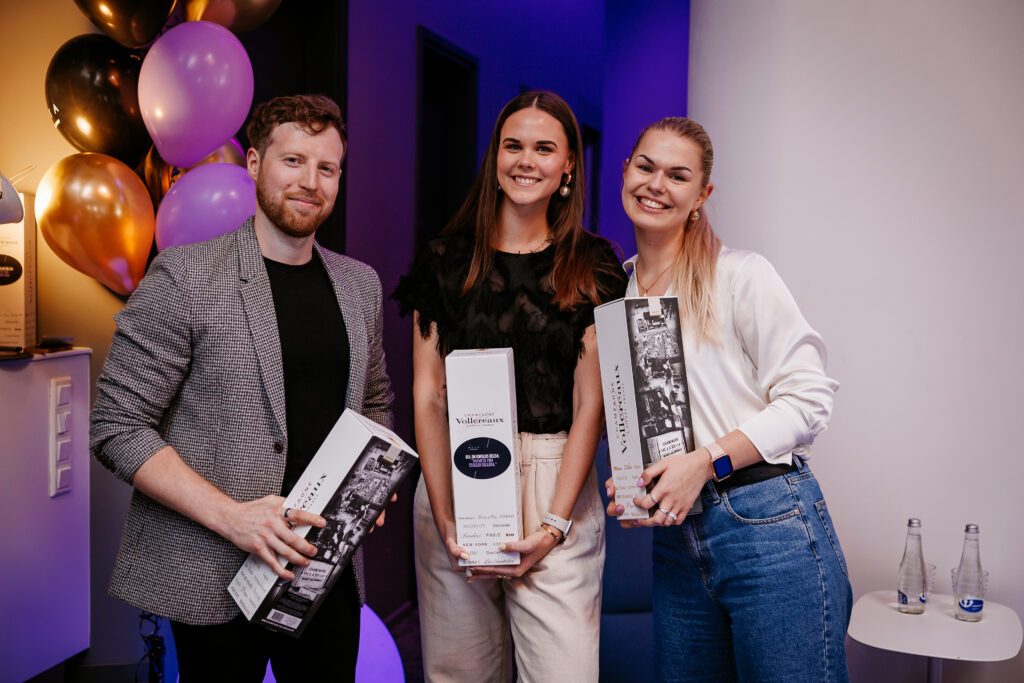

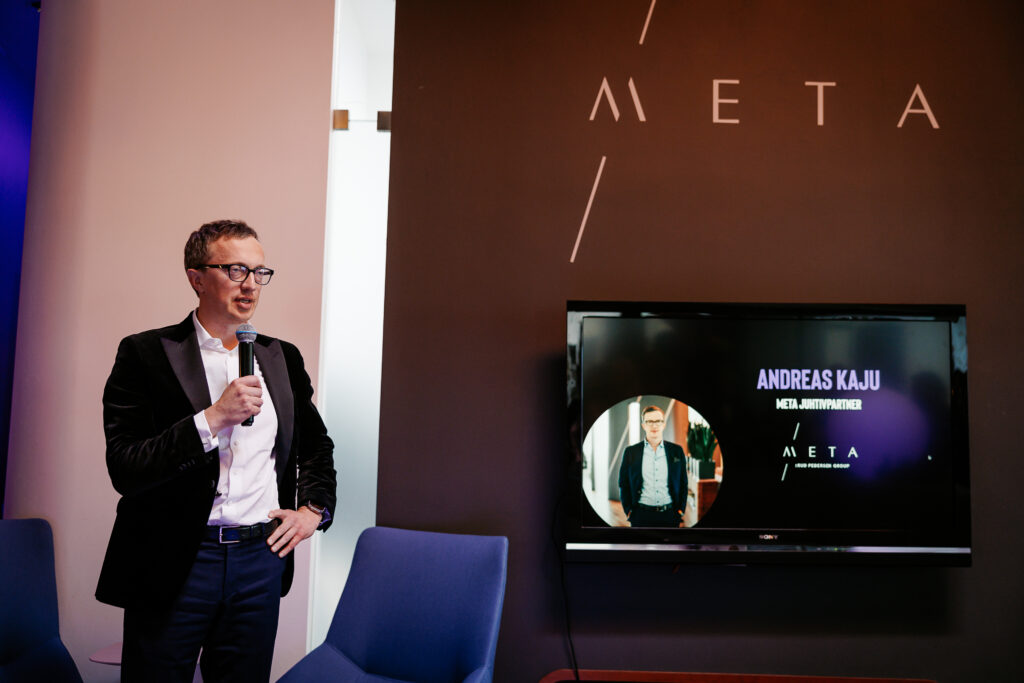


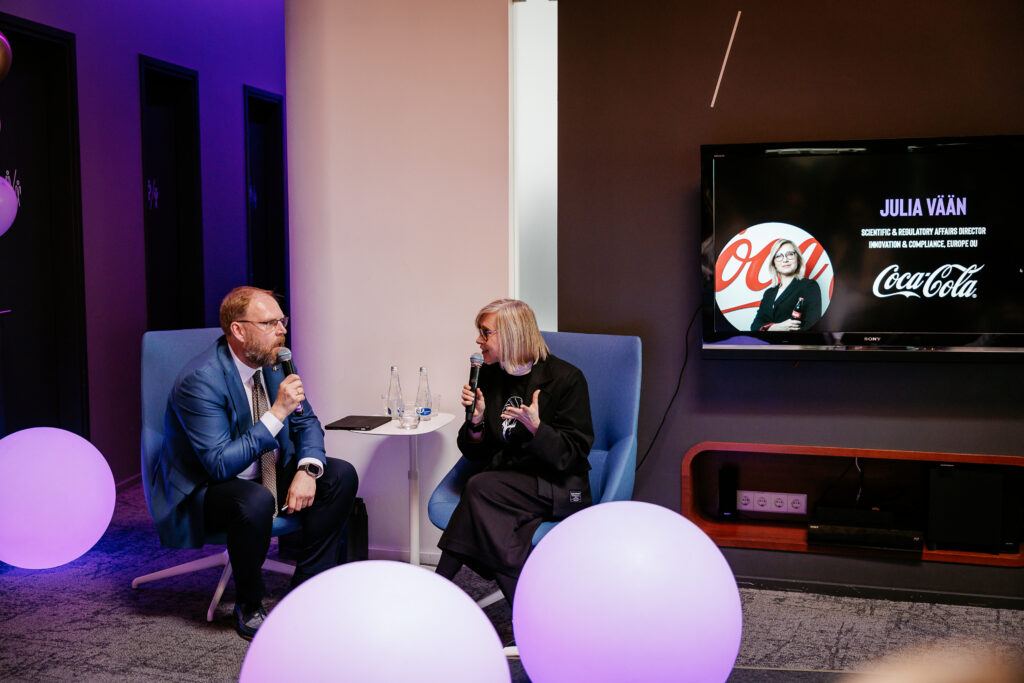
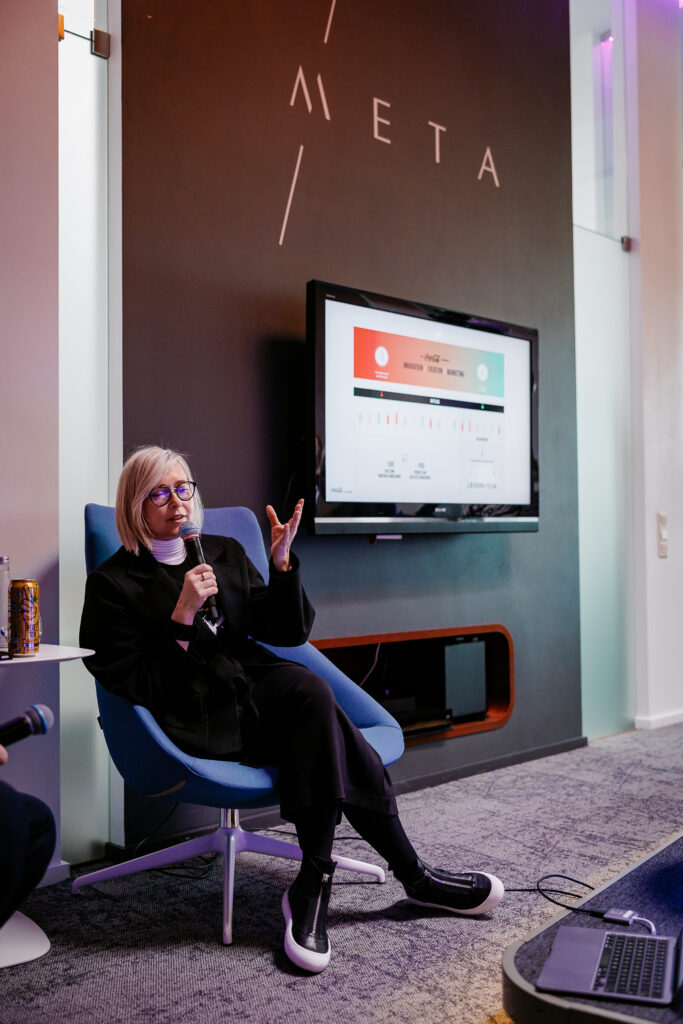

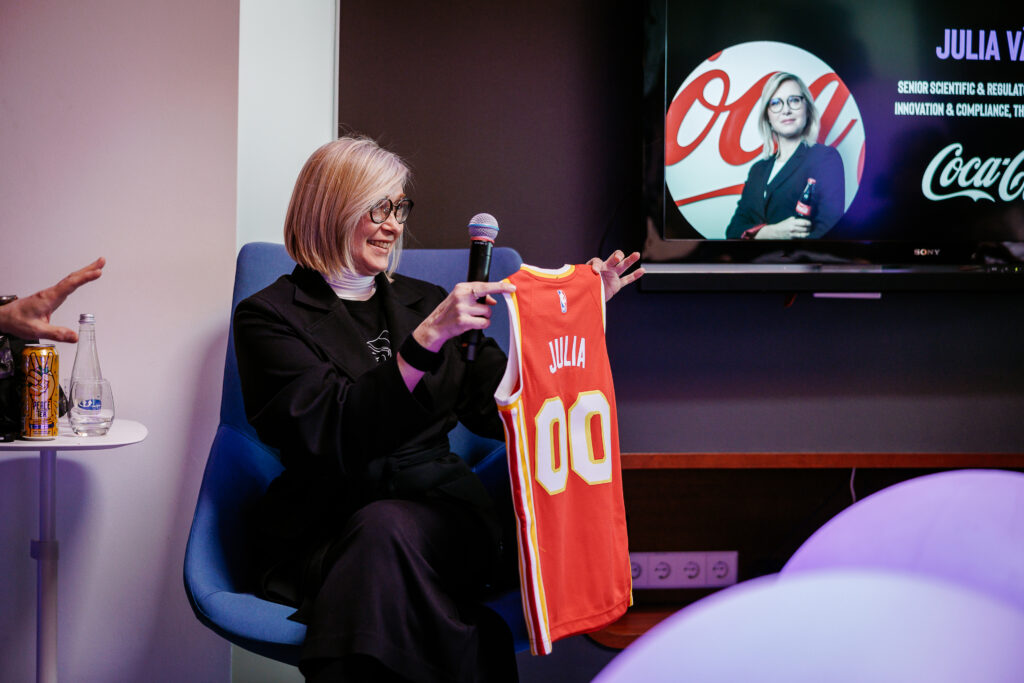
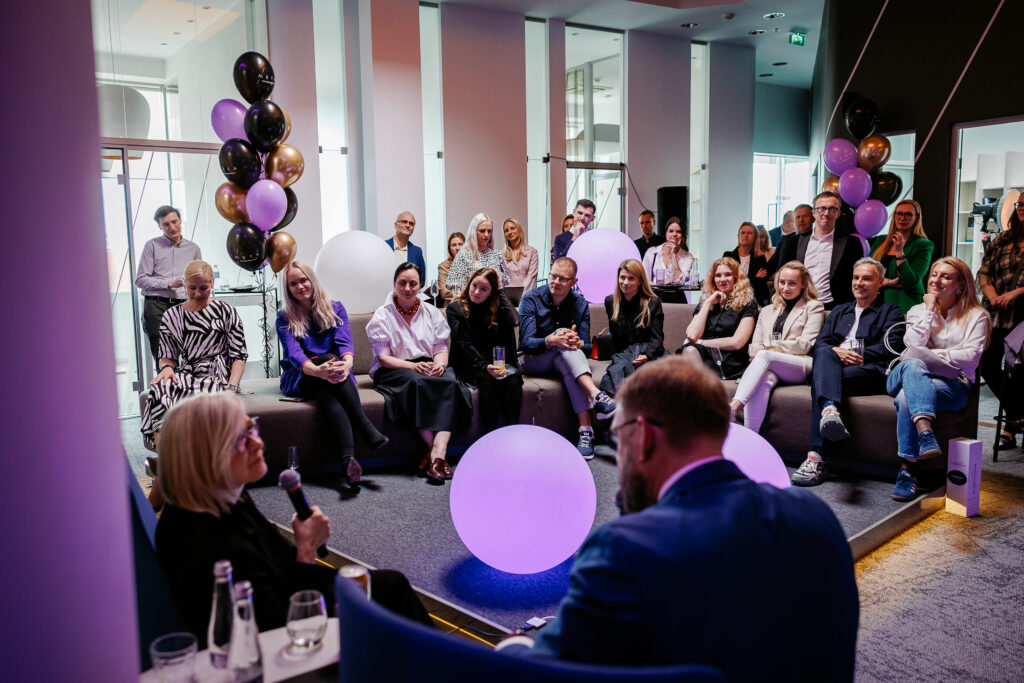
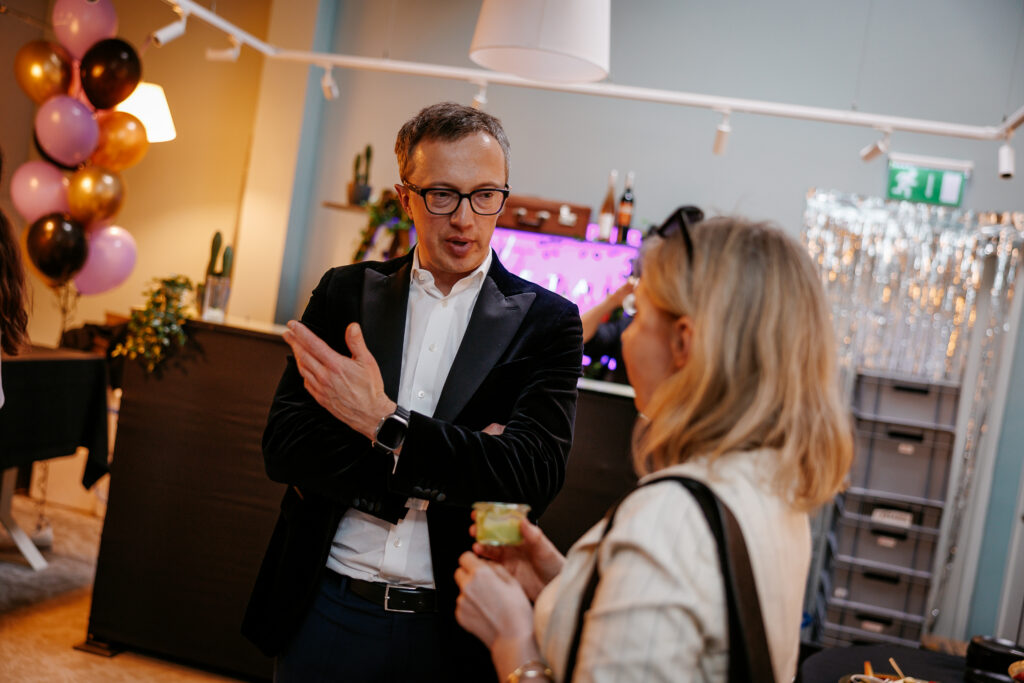
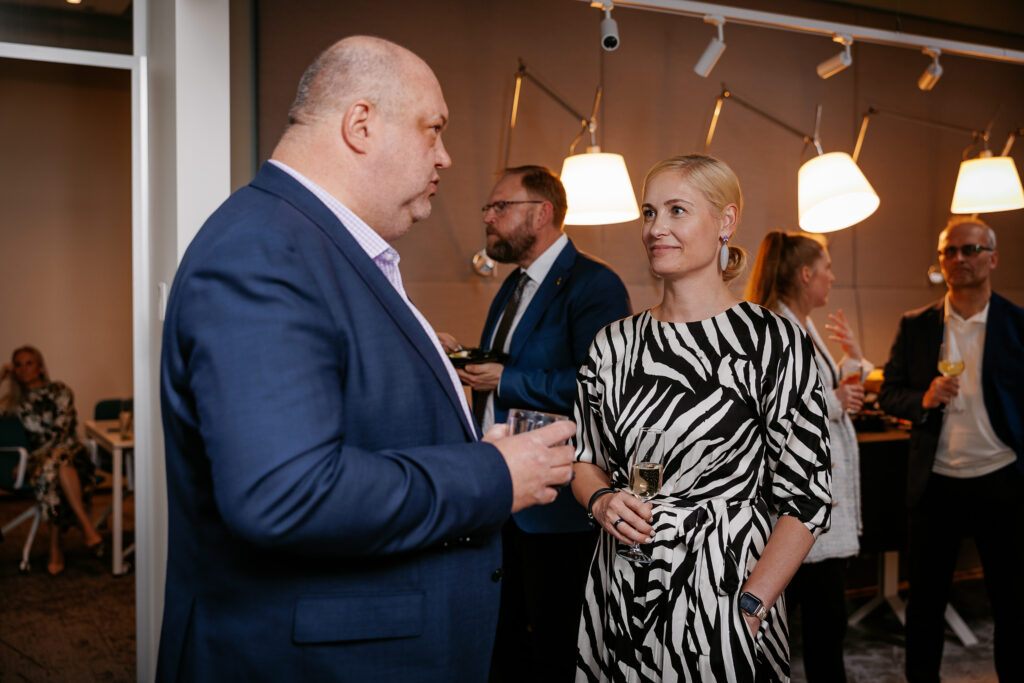
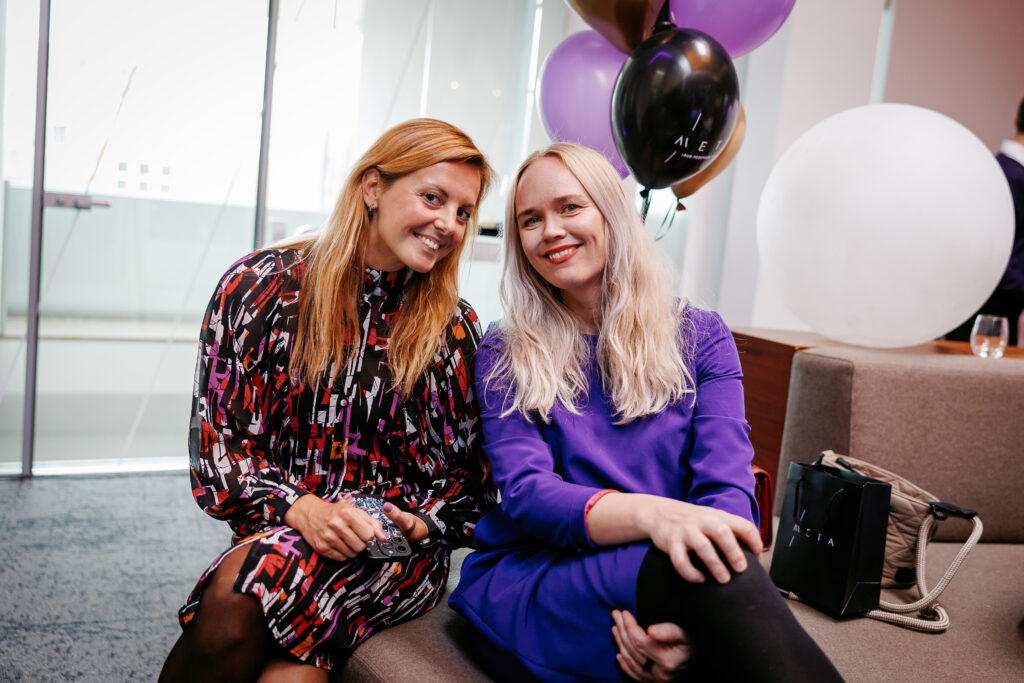
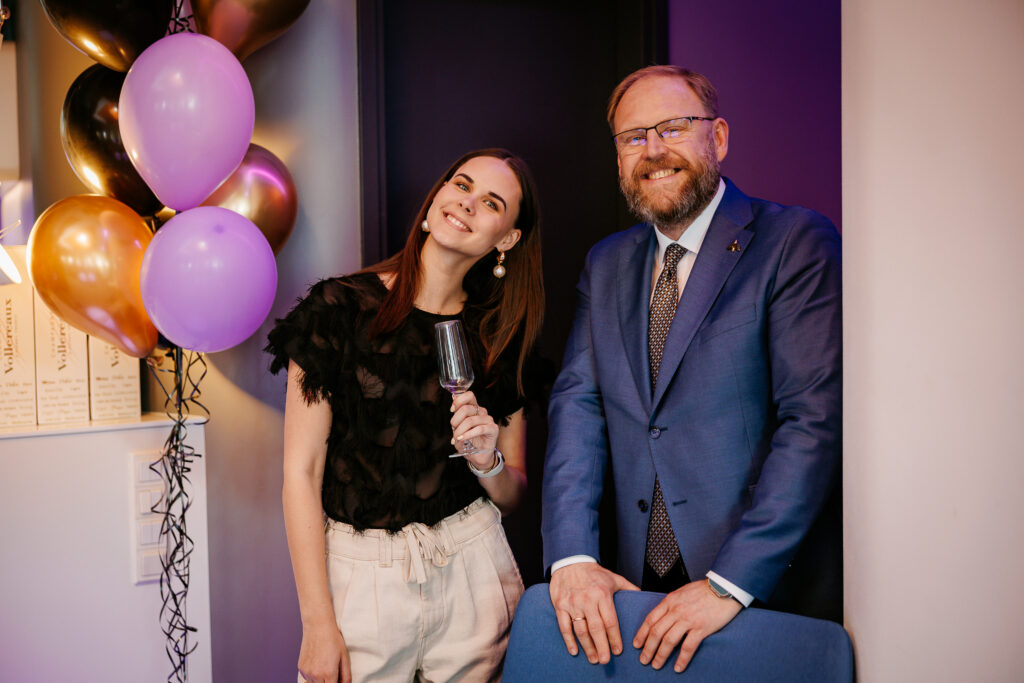
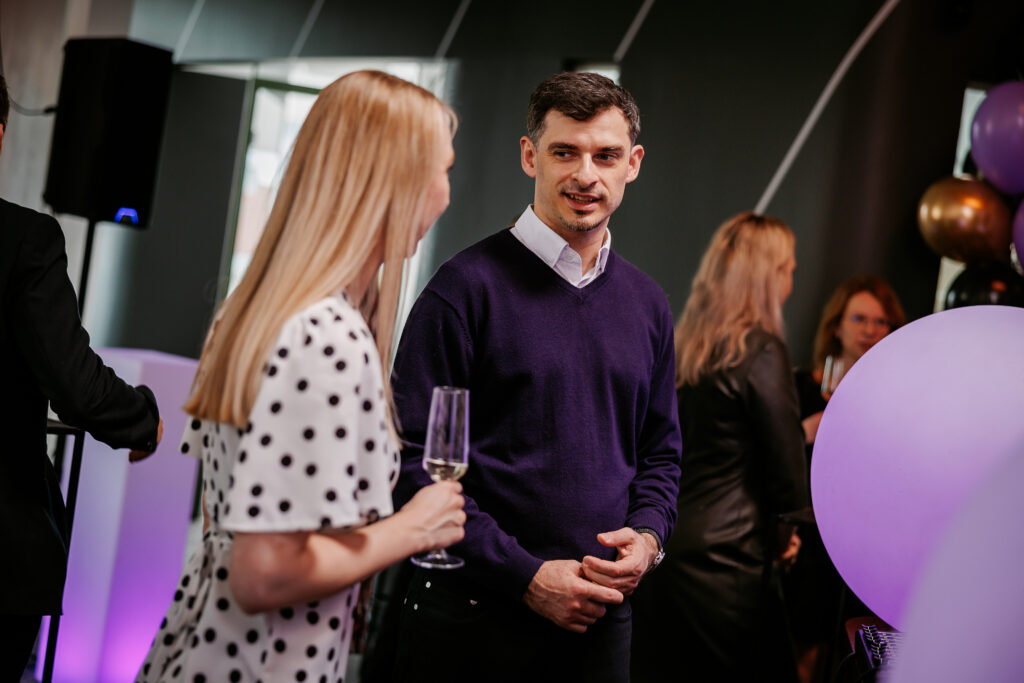
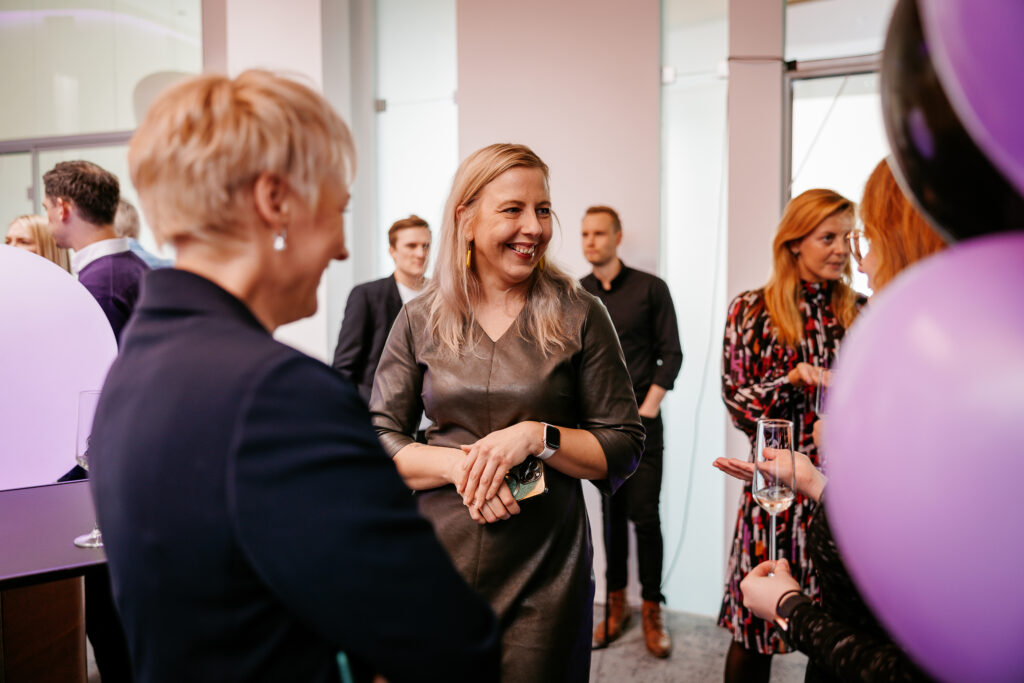
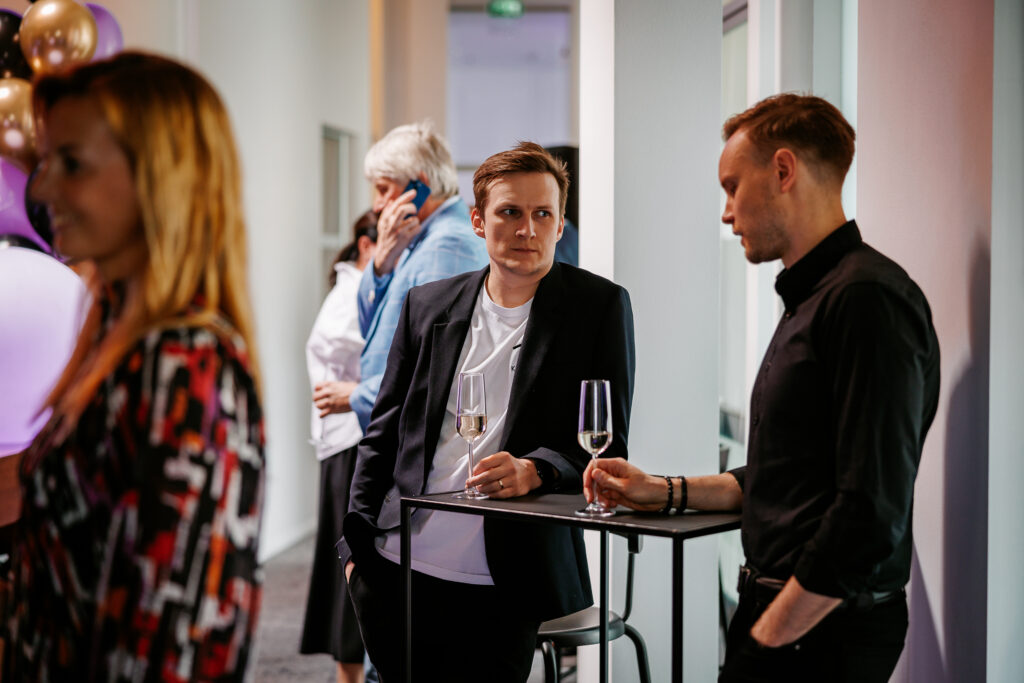




A Good Opinion Piece is More Than a Personal Stance
Opinion pieces have a rightful place in communication and getting your message across. But they’re not always the best tool for the job. Writing a compelling opinion piece is no easy task – it requires a clear idea, a solid structure, and a good dose of courage. It’s not something to dive into lightly.
A truly impactful opinion piece takes flight beyond the opinion section. It sparks further discussion – whether in news articles, on social media, or through follow-up commentaries. So why do so many opinion pieces fail to make that kind of impact?
Before you decide to write one, there are two key questions you should ask yourself:
1. Will the people I want to reach actually find and read this?
There’s no shortage of opinion pieces out there. Whether and how long yours stays on the front page of a news portal depends on whether it’s timely, clearly opinionated, and resonates with readers at that moment. Even the most avid news consumers can’t keep up with every opinion platform or read every article that catches their eye. That’s why you need to identify your core audience. Who are you trying to reach and inspire to take action? Once you’ve defined that, ask yourself: Will that audience come across this piece? Do they even read opinion articles?
2. What is the only one key message or argument I want to get across?
As the name suggests, an opinion piece should express a clear opinion on something. It should ignite something in you as the writer—and in your readers. That spark comes from a strong central idea, your main thesis. If the piece lacks a backbone to build the rest of the argument around, it will be difficult to write and even harder to read.
Opinion Pieces Aren’t Social Media Posts
People often confuse two different formats: opinion pieces and social media posts. The latter can be emotional, fragmented, and driven by the moment, more like a short remark than a structured argument. An opinion piece, on the other hand, calls for deeper analysis, a clear structure, and a sense of responsibility. If your writing fails to connect with the reader – fails to offer them something thought-provoking or inspiring – it won’t have any real impact.
A strong opinion piece doesn’t begin with a paragraph explaining why the author decided to write it. It starts with a story or a fact that makes the reader stop and think: “This affects me, too.”
“A strong opinion piece doesn’t begin with a paragraph explaining why the author decided to write it. It starts with a story or a fact that makes the reader stop and think: “This affects me, too.””
A Good Opinion Piece Needs a STORY
Even the strongest argument falls flat without a compelling story to back it up or bring it to life. Why? Because facts alone don’t persuade people, stories do. Stories allow readers to see themselves reflected in the narrative. They draw people in. That story could be a personal experience, something you witnessed, or a deep dive into a particular situation that gets the reader thinking.
So to sum up: the term “opinion piece” itself points us in the right direction. You need two key elements – a clear opinion and a story to support it. A story with an opinion.
We’ll make a press release about it, right?
This phrase in the headline can evoke both an internal unpleasant groan and an encouraging affirmative nod in the communicator. Why?
Because when we talk about communication, it can often happen that a press release is expected to work wonders and later people are disappointed that it didn’t get much coverage. And it can often feel like a press release is a good tangible thing that seems certain to go.
This is where a good communication expert and specialist comes in, who can actually propose a much wider range of communication (and marketing) activities, depending on the content and purpose of the activity, one part of which may or may not be a press release.
First of all, it is essential to know what is the purpose of the communication and who do you want to reach with your activities? You can then create a comprehensive communication plan, mapping out the target audiences, the appropriate channels, the spokespeople and the people responsible for each activity (crucial!).
What often works better than a press release?
- Direct offers of topics or a good media pitch. This requires you to have thought through the topic for yourself, picked out a key point (or two) and offer the journalist a genuinely good and meaningful topic. For example, the topic may not always be related to a specific event, but it can be related to a broader issue. It can be an important, different focus to open up the topic. Pitching doesn’t always work, but in my experience pitches are more effective than a press release.
- Writing and submitting an article for publication. However, in this case, it must not be a marketing piece or a sales pitch. As a communication activity, we are offering something of value through the writing of an article, such as essentially opening up a topic from a new or different perspective. We are always guided by the news value and, of course, the channel.
- Good and interesting speakers. We all appreciate good speakers who speak clearly and articulately and, of course, in an interesting way. Some people have a natural talent for presenting and speaking well, others can be trained. This is another area where a communication expert or partner can help.
- Invite selected journalists to the event. I emphasise – selected. Not all journalists will write/cover all topics, so it is worth making selections and invitations according to the event. This requires background work and, of course, again, a good substantive subject and background knowledge.
A press release certainly has its place in certain cases, but it all depends on the content, the purpose and the situation. When assessing the situation, it is therefore always a good idea to work with someone who knows how communication works and has the necessary media contacts.
When Should You Organise a Press Conference?
Organising a press conference is not a decision that institutions frequently face, but it often comes up in the context of significant events or situations. The key question is: when is the right moment to decide to hold a press conference?
Having worked as a communications manager for three different organizations, I’ve had to organize press conferences only a handful of times. Why? Because it usually requires an extraordinary event or situation to make a press conference truly effective. This in itself highlights why and when such an approach is appropriate.
So, when exactly should you organise a press conference? The simplest answer is that when a press release alone isn’t enough, the information affects a broad audience, and calling every publication or newsroom individually would take too long. Press conferences are particularly useful when information needs to be shared quickly and directly with as many people as possible.
“The simplest answer is that when a press release alone isn’t enough, the information affects a broad audience, and calling every publication or newsroom individually would take too long.”
If the situation is critical and has high news value, a press conference is often the easiest and most sensible way to provide information to everyone simultaneously and address questions immediately.
For example, The Government of Estonia holds weekly press conferences to share decisions and respond to questions.
The Estonian Health Board organised regular press conferences during the COVID-19 pandemic to disseminate information to as many people as possible at once and to allow journalists to ask questions on the spot.
To evaluate whether a press conference is the right step for your organization, consider the following checklist:
- Does the information, event, or situation meet at least four newsworthiness criteria? Is it unusual, impactful, relevant, timely, and topical?
- Does the situation have significant news value, impacting a large group of people or a substantial portion of your target audience?
- Do you have enough information to justify holding a press conference? Specifically:
- What happened?
- When did it happen?
- Who is involved?
- Where did it happen?
- Why did it happen?
- How did it happen?
If you can confidently answer “yes” to all these questions and have enough information to explain the situation, the next step is to ask yourself: are you prepared to answer critical questions? Do you know what happens next? Press conferences are often organised in response to crises — whether due to major accidents, reputational issues for a large institution, or the need to disclose significant new information.
In these situations, having a skilled communications specialist or agency partner is invaluable. They can help assess the situation, provide crisis communication support, or suggest alternative solutions to ensure the information reaches the right audience quickly and effectively.
New year, new challenges: How do we prepare for new laws?
“What!? More new requirements and regulations from the start of next year? Why am I just hearing about this now?”
Despite government ministries’ increasingly effective engagement efforts, this kind of startled reaction when reading the news is not uncommon. Small business owners and startups, in particular, often focus all their energy on building their businesses or managing day-to-day operations that keep the lights on. Unfortunately, this isn’t just a concern for beginners—overlooking new regulatory processes happens even in the best-run companies. It’s entirely fair to admit that staying on top of everything isn’t always possible, nor is it necessary. But it’s undeniably frustrating when surprises like these arise.
Wouldn’t it be more practical if experts kept an eye on regulatory changes—just as they do with climate change? Whether it’s an in-house legal advisor, an industry association, or an agency that specializes in tracking sector-specific developments, these professionals have the tools and methods to monitor important updates effectively.
“There’s a draft bill in Parliament that directly impacts us—we need to act quickly and bring in some help! (P.S. Who even voted for these people!?)”
Many can relate to discovering a critical update in their inbox—perhaps an overlooked notification from an industry association or an alert about a bill in Parliament. Worse still, it might significantly impact current business operations, whether it’s a new obligation, regulation, or tax. By the time a bill is under parliamentary review, it’s often too late to amend or reverse it.
While META Advisory has seen successful last-minute advocacy efforts, effective government relations require a longer-term, well-thought-out strategy. Scrambling at the last stage of the process can do more harm than good, particularly when considering future relationships. In Estonia—a democratic country with relatively straightforward legislative procedures—there’s enough time and opportunity to communicate clear messages to decision-makers, ideally at earlier stages. These messages can be critical or supportive, depending on whether the legal framework needs more clarity or stricter rules to ensure a level playing field.
“Sure, the ministry is at it again, but as long as the same rules apply to everyone, it doesn’t matter—they don’t listen to us anyway.”
Estonian entrepreneurs (and people in general) tend to be highly tolerant. Most will endure hardships as long as competitors face the same challenges. Protests and flipped cars aren’t standard methods for expressing dissatisfaction here. However, passive indifference isn’t constructive, either. While rules may apply equally to everyone, the starting points and competitiveness vary significantly.
Estonia is also characterized by its horizontal structure. Along with its relatively flat geography, the country’s power structure is remarkably accessible. With enough determination and reasoning, anyone can secure a meeting with a minister or high-ranking official. The real question is whether this opportunity is used effectively. Many META consultants have previously worked in government roles, giving us a deep understanding of who to approach, when, and how to ensure entrepreneurs’ legitimate interests are heard.
“I heard the EU imposed yet another set of pointless regulations on our industry. At least we get subsidies from them.”
Our expertise isn’t limited to Estonia. We are well-versed in European Union processes and the institutions involved. No EU rule or regulation appears overnight, leaving local officials scrambling to adapt them to Estonian law. Yes, there’s been a lot lately, and our small country’s administrative capacity has been put to the test. However, every EU legislative act goes through a lengthy process before approval, during which stakeholders can participate and voice their opinions. The best time to engage is when the EU calls for public consultation.
EU decision-making can seem complex, and it often feels like decisions are made in a “black box,” impossible to understand or influence. This isn’t true. It’s worth remembering that many officials in Europe or Estonia lack practical field experience. That’s why government relations are essential—not just for advocacy’s sake but for creating a better legal framework overall.
“My team at META handles that!”
Ultimately, there’s another option: delegate. It’s most efficient when entrepreneurs focus on running their businesses, leaders ensure the execution of business plans, and government relations consultants ensure that the correct information reaches the right decision-makers at the right time. Every business is unique, and competition in an open world is fierce. That’s why people should focus on what they do best—whether running a company or navigating these seemingly vague processes. One thing is sure: we’re ready to tackle any challenge head-on. Contact us!
5 communication essentials for startup success
The success of many startups often lies in strategic communication, which not only makes the brand visible but also builds trust. In a highly competitive landscape, clear, targeted communication provides startups a key advantage, helping them stand out. Every step in building a strategy matters, from understanding investor perspectives to raising brand awareness.
Know your investors and their expectations
Communication must be clear, well-considered, and tailored to specific target audiences. For many startups, investors are a crucial audience, so it’s essential to put yourself in their shoes and understand what they need to know. What do they already know about your company? What should they know? Where are they likely to look for information, and how might they interpret what they find?
Answering these questions allows you to create a strategy that enhances visibility and supports fundraising efforts. Remember, one PR activity rarely reaches all desired audiences at once. Instead, focusing each action – whether a social media post or an article – on a core message for a specific audience is often more effective and impactful.
“Remember, one PR activity rarely reaches all desired audiences at once. Instead, focusing each action – whether a social media post or an article – on a core message for a specific audience is often more effective and impactful.”
Your strategy must be substantial and well thought-out, with messages centered on what truly matters. Core messages should be consistent, clear, and woven into communication efforts to support business goals. Chasing constant novelty doesn’t help build a coherent and understandable narrative about your business.
LinkedIn: the business world’s Google
LinkedIn is becoming an increasingly crucial channel and cannot be ignored. In Estonia, over 370,000 people use LinkedIn, and globally, it has more than 830 million users. It’s the “Google of the business world” where interested parties look for company information. Therefore, it’s essential to ensure your company’s profile is polished, relevant, and filled with meaningful posts. Key team members’ profiles should also be professional and clearly showcase their expertise, the value they bring, and the mission they support. This makes it easier for potential investors to understand the company’s strengths.
Build trust through media exposure
A strong way to attract potential investors and build trust is to feature in (industry) media. News portal coverage ranks high in search engines, helps maintain a top-of-mind position, and keeps you in investors’ awareness. Media exposure supports credibility.
“A strong way to attract potential investors and build trust is to feature in (industry) media.”
If the goal is to catch investors’ attention, consider which channels and media outlets in which countries to prioritise. For example, targeting US investors means aiming for visibility in US publications. If the next funding round is likely from Estonia, focus on the local market.
Owned channels reflect your efficiency
Don’t overlook your owned channels as part of your communication efforts. If your website or social media was last updated a year ago, filled with outdated information or photos of former employees, it signals inactivity and inflexibility. Regularly check your owned channels, update recent news, and ensure all information aligns with your communication strategy.
Building a reliable brand is a marathon, not a sprint
Never assume your target audience knows everything about you or fully understands your solution. Being immersed in your field can make it feel like everyone already knows what you do, but that’s rarely the case. Building brand awareness and staying memorable requires long-term strategic work. Often, a single appearance in a news portal’s feed isn’t enough to make a lasting impression. Good communication rests on thorough planning, persistence, and engaging with your audience in ways they understand.
Three tips for international media relations
Years ago, I gained my first experience in international media relations while working as a press officer at the French Embassy in Estonia. French journalists coming to Estonia to cover stories often sought help finding spokespeople and additional context about their topics of interest. I saw firsthand the amount of preparation journalists put into their work before the story got published.
From a PR consultant perspective, international media relations have become increasingly crucial for Estonian companies. With a wish to expand into foreign markets comes a need to introduce the company itself, their products, and their services. What should one remember when attempting to get on the pages of an international media outlet?
1. Know the journalist (and the publication)
Understanding a journalist’s style and interests is also crucial for pitching stories to Estonian media, but it’s even more critical internationally. Journalists receive an overwhelming number of pitches daily. The “spray and pray” approach doesn’t typically work in international media relations. To stand out, you must know what matters to the journalist.
“The “spray and pray” approach doesn’t typically work in international media relations. To stand out, you must know what matters to the journalist.”
It’s also vital to understand the publication they work for. There’s a big difference between pitching to a business news portal and a popular science magazine. The angle you choose for your story depends on this—the more generic your message, the higher the chance it ends up in the spam folder.
But how do you find the right publication and journalist? Tools like Google and ChatGPT may only sometimes be adequate for this purpose. At Meta Advisory, we are using an international media monitoring system called Meltwater. This tool allows us to analyse over 270,000 global media outlets and map activity across over 15 social media platforms, podcasts, and print publications.
With Meltwater, you can identify relevant outlets and journalists based on specific keywords, topics, and regions. The tool is especially crucial for crisis communication. One of our clients recently had a case where potentially damaging information spread like wildfire in the international media. Meltwater helped us monitor coverage and provided contacts for journalists covering the topic, enabling us to send clarifications to many outlets promptly.
2. “Go big or go home” is not the best approach in international media relations
Landing a story in prestigious publications like the Financial Times, Bloomberg, or The Guardian is undoubtedly a worthwhile goal, but it’s not always the most reasonable strategy. Instead of persistently pitching TIER 1 outlets with stories that lead nowhere, try approaching trade publications. While these often have smaller audiences, they are closely followed by other journalists and might be a doorway to TIER 1 publications.
“Instead of persistently pitching TIER 1 outlets with stories that lead nowhere, try approaching trade publications.”
Trade publications are more accessible, and their quality tends to be relatively high because they focus exclusively on specific fields. Something extraordinary must happen in Estonia to catch the attention of world-renowned publications. Local news from small countries rarely meets their standards.
A few months ago, I pitched a story about a client’s multi-hundred-million-euro investment in Western Europe to a TIER 1 publication journalist. The response was “Interesting, but not newsworthy enough for us.” In Estonia, this story had been the most important news of the day.
Recently, we helped a client connect with an international journalist specializing in space topics. The interview was published in a space-focused publication and quickly gained traction, being referenced in over ten international media outlets. This example highlights the strategic value of niche industry media for businesses looking to amplify their message.
That doesn’t mean major outlets are out of reach for Estonian companies, far from it. However, achieving this requires consistent effort. Sending a press release once or twice a year won’t cut it.
Additionally, don’t expect press releases to be copy-pasted as news in international outlets. A press release is one of many tools for building systematic international media relations.
3. Be patient
Supporting the communications for several international events over recent years has taught me patience. Stories don’t happen in days — or even weeks. In one case, it took four months from the first contact with a journalist to the actual coverage. I received the journalist’s initial response within a week of reaching out, but scheduling the interview, preparing for it, navigating internal editorial processes, and finalising the story took time.
“Stories don’t happen in days — or even weeks. In one case, it took four months from the first contact with a journalist to the actual coverage.”
Long lead times are the norm, not the exception, in international media relations. Starting your media efforts weeks, if not months, in advance for important topics or events is wise. But for that first contact to be fruitful, you must do your homework to reach the right person at the publication. It all comes back to knowing the journalist you are reaching out to.
The EU’s new promise: less bureaucracy, a stronger industry
The European Union has historically been known for its bureaucracy and numerous regulations. However, Ursula von der Leyen’s second term promises to focus on reducing bureaucracy and supporting economic growth and investment. Her goal is to reduce companies’ reporting obligations and to adapt major policies, such as the Green Deal, to economic realities. In the mission letters sent to commissioners, she even added a separate chapter titled: Making Europe simpler and faster. Still, there are fears that the Commission might create more bureaucracy while trying not to.
Before the new Commission can take office, the commissioner-designates must go through hearings in the European Parliament, which have been concluded by now. Not all future Commissioners have received Parliament’s approval as of today, but political analysts believe that the entire College will nevertheless be appointed next week. To better prepare the commissioners for the upcoming term, President von der Leyen sent mission letters to all commissioner candidates, providing insights into the new Commission’s policies. The tasks set for the commissioners are largely based on the Mario Draghi report on EU competitiveness published in September, which painted a rather bleak picture of Europe’s future if concrete steps are not taken.
Although the mission letters are quite general, and details will emerge during the term, it is clear that the so-called umbrella policy will be the Clean Industrial Deal which will focus on attracting investments and simplifying public procurement rules.
The responsibility for presenting the Clean Industrial Deal lies with the Frenchman Stéphane Séjourné, who has been nominated for Executive Vice-President in charge of Prosperity and Industrial Strategy. His main task is indeed to develop Europe’s new industrial strategy. He must create conditions for industries to invest, aiming for greater (technological) sovereignty in Europe. Innovation, research, and technology are central to his portfolio.
Séjourné is also partially responsible for the European Competitiveness Fund and reviewing public procurement directives to ensure Europe can access critical technologies. Implementing and advancing the Critical Raw Materials Act is also one of his tasks. He will propose new specific measures such as a Circular Economy Act, a new Chemicals Industry Package, a European Biotech Act, a steel and metals action plan, and a Standardisation Regulation.
The Commission’s largest share of new tasks has undoubtedly gone to the Spaniard Teresa Ribera Rodríguez, who has been nominated as Executive Vice-President responsible for a Clean, Just and Competitive Transition.
Her task is to update EU policies to support European companies in global competition and contribute to broader competitiveness, sustainability, and security goals. Since von der Leyen’s idea in the new Commission is to reduce personal fiefdoms and thereby ensure greater college cooperation, the responsibilities and even titles of the commissioners largely overlap.
Under the Clean Industrial Deal, Ribera must also focus on developing a framework to simplify new state aid rules to accelerate renewable energy adoption, tackle industrial carbon emissions reduction, and ensure adequate production capacities.
She will also focus on the challenges facing SMEs and oversee the implementation of the European Competitiveness Fund, and under it, make proposals for so-called Important Projects of Common Interest in strategic sectors. The classic competition portfolio elements such as assessing the impact of major mergers on competition, also remains under her purview. There, she must also consider the changed defence and security landscape.
In light of the changed security situation, the position of Defence Commissioner has been created to be filled by former Lithuanian Prime Minister Andrius Kubilius. His task is to create a European Defence Union in close cooperation with member states and NATO. Within the first 100 days he is expected, in collaboration with High Representative Kaja Kallas, to produce a White Paper on the Future of European Defence, which will shape a new approach to defence and identify investment needs. Kubilius will also be responsible for creating a Single Market for Defence products and services to increase production capacities in Europe and encourage joint procurements. In the new term, the Commission will also pay special attention to SMEs and propose ways to improve their integration into supply chains.
Kubilius will also be responsible for developing a European cyber defence common project, implementing and monitoring the European Defense Industry Programme, and strengthening the European Defence Fund to increase investments in high-level defence capabilities in critical areas such as naval, air combat, and space-based early warning systems. In the space domain, he will promote the space industry by creating common standards and regulations.
The digital portfolio, a favourite topic among Estonians, will be managed by Finnish Henna Virkkunen, who has been nominated for the position of Executive Vice-President responsible for Tech Sovereignty, Security and Democracy. Her broader task is to lead Europe out of the situation where only four of the world’s 50 largest technology companies are from Europe.
Virkkunen must foster AI innovation and, within the first 100 days, ensure access to tailored supercomputing capacity for AI start-ups and industry through the AI Factories initiative. She will also establish a European AI Research Council.
Virkkunen’s new responsibilities include drafting the EU Cloud and AI Development Act and the EU Data Union Strategy. She will continue developing the existing Chips Act but also propose a long-term EU Quantum Chips plan.
Work in Europe will continue with secure, fast, and reliable connectivity – for this, she will introduce a new Digital Networks Act. The Digital Services Act, Digital Markets Act, and the EU Wallet adopted in the previous mandate must be better enforced. She will also be responsible for greater digitalisation and cyber resilience of the Commission as an institution.
Energy will be handled by Dutchman Wopke Hoekstra, nominated as Commissioner for Climate, Net Zero, and Clean Growth, and Dane Dan Jørgensen, nominated as Commissioner for Energy and Housing. Hoekstra will focus on issues related to decarbonisation, such as meeting emission reduction targets under a European Climate Law, establishing an Industrial Decarbonisation Accelerator Act, creating net zero infrastructure, and phase out fossil fuel subsidies. At the same time, Jørgensen is tasked with completing the Energy Union. Among other things, the rules for establishing the Energy Union should lower energy prices, increase investment in clean energy production, and develop grid infrastructure. An action plan to end energy imports from Russia is also to be submitted. Europe wants to accelerate the adoption of small modular reactors and address carbon capture and storage issues.
Setting the goal for commissioners to reduce administrative burdens and simplify legislation is, of course, a response to public pressure. Large companies who do have the resources to comply with regulations have also criticised Brussels for fragmentation, unpredictability, and being anti-innovation. Mario Draghi has pointed out that since 2019, the EU has adopted 13,000 pieces of legislation, while the US has adopted about 3,000 over the same period. As can be seen, even the abovementioned six commissioners out of 27 have substantial tasks ahead with both existing and new laws. Creating regulations, with all the associated strategic dialogues, impact assessments and consultations, is indeed the work of the Commission. It would likely be challenging to make a mark by doing nothing.

NB! Microsoft on loobunud Internet Exploreri arendamisest ning sellele uuenduste tegemisest ja ei soovita antud internetibrauserit turvanõrkuste tõttu kasutada. Internet Explorer ei toeta enam uusi võrgustandardeid ning antud veebilahendus ei tööta siinses brauseris korrektselt.
Palun lae alla mõni moodne veebilehitseja:
The website uses cookies. Cookies are required for your convenience and web statistics. By continuing to use the website, you agree to the terms of the privacy of cookies! You can see the terms of the privacy policy in here.





